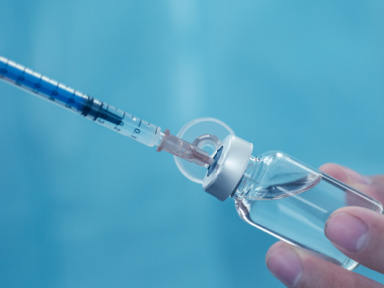worldpharmanewsAugust 13, 2021
Tag: COVID-19 Vaccine , RBD
Even as several safe and effective COVID-19 vaccines are being administered to people worldwide, scientists are still hard at work developing different vaccine strategies that could provide even stronger or longer-lasting immunity against SARS-CoV-2 and its variants. Now, researchers reporting in ACS Central Science have immunized mice with nanoparticles that mimic SARS-CoV-2 by displaying multiple copies of the receptor binding domain (RBD) antigen, showing that the vaccine triggers robust antibody and T cell responses.
Although the first vaccines to receive Emergency Use Authorization by the U.S. Food and Drug Administration were based on mRNA, more conventional protein-based vaccines have also shown promise in clinical trials. Most train the immune system to recognize the RBD, a peptide that is the portion of the SARS-CoV-2 spike protein that binds to the ACE-2 receptor on host cell surfaces. However, not all of these vaccines elicit both antibody and T cell responses, both of which are thought to be important for longer-lasting immunity. Melody Swartz, Jeffrey Hubbell and colleagues had previously developed a vaccine delivery tool called polymersomes - self-assembling, spherical nanoparticles that can encapsulate antigens and adjuvants (helper molecules that boost the immune response) and then release them inside immune cells. Polymersomes trigger robust T cell immunity, and the researchers wondered if they could further improve the antibody response by engineering the nanoparticles to mimic viruses by displaying multiple copies of the RBD on their surfaces.

So the team made polymersomes that were similar in size to SARS-CoV-2 and decorated them with many RBDs. After characterizing the nanoparticles in vitro, they injected them into mice, along with separate polymersomes containing an adjuvant, in two doses that were three weeks apart. For comparison, they immunized another group of mice with polymersomes that encapsulated the RBD, along with the nanoparticles containing the adjuvant. Although both groups of mice produced high levels of RBD-specific antibodies, only the surface-decorated polymersomes generated neutralizing antibodies that prevented SARS-CoV-2 infection in cells. Both the surface-decorated and encapsulated RBDs triggered robust T cell responses. Although the new vaccine still needs to be tested for safety and efficacy in humans, it could have advantages over mRNA vaccines with regard to widespread distribution in resource-limited areas, the researchers say. That’s because the surface-decorated polymersomes are stable and active for at least 6 months with refrigeration, in contrast to mRNA vaccines that require subzero temperature storage.
Volpatti LR, Wallace RP, Cao S, Raczy MM, Wang R, Gray LT, Alpar AT, Briquez PS, Mitrousis N, Marchell TM, Sasso MS, Nguyen M, Mansurov A, Budina E, Solanki A, Watkins EA, Schnorenberg MR, Tremain AC, Reda JW, Nicolaescu V, Furlong K, Dvorkin S, Yu SS, Manicassamy B, LaBelle JL, Tirrell MV, Randall G, Kwissa M, Swartz MA, Hubbell JA.
Polymersomes decorated with SARS-CoV-2 spike protein receptor binding domain elicit robust humoral and cellular immunity.
bioRxiv [Preprint]. 2021 Apr 8:2021.04.08.438884. doi: 10.1101/2021.04.08.438884


Contact Us
Tel: (+86) 400 610 1188
WhatsApp/Telegram/Wechat: +86 13621645194
Follow Us:




 Pharma Sources Insight January 2025
Pharma Sources Insight January 2025


